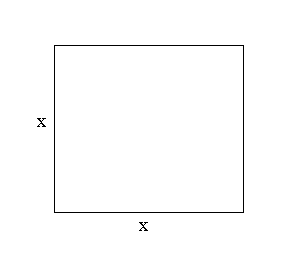Please wait while we process your payment
If you don't see it, please check your spam folder. Sometimes it can end up there.
If you don't see it, please check your spam folder. Sometimes it can end up there.
Please wait while we process your payment

By signing up you agree to our terms and privacy policy.
Don’t have an account? Subscribe now
Create Your Account
Sign up for your FREE 7-day trial
By signing up you agree to our terms and privacy policy.
Already have an account? Log in
Your Email
Choose Your Plan
Individual
Group Discount
Save over 50% with a SparkNotes PLUS Annual Plan!
 payment page
payment page
Purchasing SparkNotes PLUS for a group?
Get Annual Plans at a discount when you buy 2 or more!
Price
$24.99 $18.74 /subscription + tax
Subtotal $37.48 + tax
Save 25% on 2-49 accounts
Save 30% on 50-99 accounts
Want 100 or more? Contact us for a customized plan.
 payment page
payment page
Your Plan
Payment Details
Payment Summary
SparkNotes Plus
You'll be billed after your free trial ends.
7-Day Free Trial
Not Applicable
Renews April 30, 2025 April 23, 2025
Discounts (applied to next billing)
DUE NOW
US $0.00
SNPLUSROCKS20 | 20% Discount
This is not a valid promo code.
Discount Code (one code per order)
SparkNotes PLUS Annual Plan - Group Discount
Qty: 00
SparkNotes Plus subscription is $4.99/month or $24.99/year as selected above. The free trial period is the first 7 days of your subscription. TO CANCEL YOUR SUBSCRIPTION AND AVOID BEING CHARGED, YOU MUST CANCEL BEFORE THE END OF THE FREE TRIAL PERIOD. You may cancel your subscription on your Subscription and Billing page or contact Customer Support at custserv@bn.com. Your subscription will continue automatically once the free trial period is over. Free trial is available to new customers only.
Choose Your Plan
This site is protected by reCAPTCHA and the Google Privacy Policy and Terms of Service apply.
For the next 7 days, you'll have access to awesome PLUS stuff like AP English test prep, No Fear Shakespeare translations and audio, a note-taking tool, personalized dashboard, & much more!
You’ve successfully purchased a group discount. Your group members can use the joining link below to redeem their group membership. You'll also receive an email with the link.
Members will be prompted to log in or create an account to redeem their group membership.
Thanks for creating a SparkNotes account! Continue to start your free trial.
We're sorry, we could not create your account. SparkNotes PLUS is not available in your country. See what countries we’re in.
There was an error creating your account. Please check your payment details and try again.
Please wait while we process your payment

Your PLUS subscription has expired
Please wait while we process your payment
Please wait while we process your payment

Solving Word Problems
Often, word problems appear confusing, and it is difficult to know where to begin. Here are some steps that will make solving word problems easier:
Example 1: Matt has 12 nickels. All the rest of his coins are dimes. He has just enough money to buy 2 slices of pizza for 95 cents each. How many dimes does he have?
5 dimes? 10(5) + 60 = 110. Too low.
10 dimes? 10(10) + 60 = 160. Still too low.
20 dimes? 10(20) + 60 = 260. Too high.
So we know the answer is between 10 and 20.
10d + 60 - 60 = 190 - 60
10d = 130
=

d = 13
Example 2: Jen is shooting free-throws on the basketball court. She makes 85% of her shots. If she makes 51 shots, how many does she miss?
 -- of her shots. Jen makes 51 shots. What needs to be found? The number of shots that Jen misses.
-- of her shots. Jen makes 51 shots. What needs to be found? The number of shots that Jen misses. 5 shots?=
. Not enough misses.
10 shots?=
. Too many misses.
So we know the answer is between 5 and 10.
 =
=  where x is the number of misses.
where x is the number of misses. =

51() = 51(
)
51 + x = 60
51 + x - 51 = 60 - 51
x = 9
 =
=  ? Yes. Does 9 shots make sense in the context of the problem? Yes.
? Yes. Does 9 shots make sense in the context of the problem? Yes.

x = 5? A = 52 = 25, p = 4(5) = 20. Area too small.
x = 10? A = 102 = 100, p = 4(10) = 40. Area too large.
So we know the answer is between 5 and 10.
=

x = 8
Please wait while we process your payment

